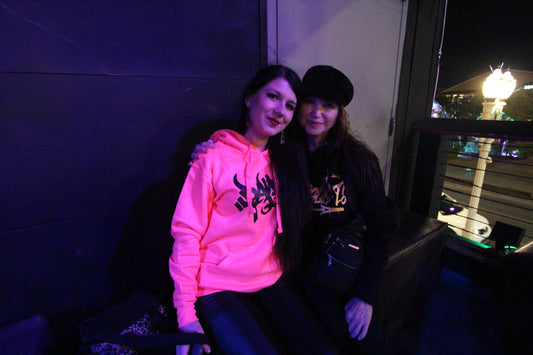
B-Boying / Breakdancing Will Be An Olympic Sport In 2024 At Paris
Share
B-Boying / Breakdancing Will Be An Olympic Sport In 2024 At Paris
The International Olympic Committee has officially informed that it will add breakdancing to the Games under the name ‘’Breaking’’. The dancers, usually called B-Boys or B-Girls, will be able to represent their countries and compete in the 2024 Summer Olympic Games in Paris, France.
At first this sounds like great news and it will be for many but at what cost? This will forever change what we know as B-Boying, most likely there will be a huge commercialization of our scene somewhat similar to what happened in the 80s where what some claim as the commercial terms emerged like "Breakin, Breakdancing, Breaker and Breakdance" that are still argued about to this day but are the Terms that most people outside the scene know it as. Will the B-Boy / B-Girl culture remain in tact? Will small business and promoters that actually are from and love the scene get ran over by huge corporations that do not care about the welfare of the scene just the dollars they can make from raping it? These are all things to consider.
Check out some of these corny commercials from the 80s
Brief History of the B-Boy and B-Girl
Breakdancing is not only a style of hip-hop dance it is the original dance of Hip-Hop and one of the 4 elements that make up Hip-Hop. It contains footwork and athletic moves like back or head spins.
B-Boying is one of the 4 components of hip hop culture alongside deejaying, or turntabling; rapping, also known as “MCing” or “rhyming” and graffiti painting.
B-Boy originally stood for Bronx Boy and at sometime they changed it to Break Boy which Im sure nobody from the Bronx changed it though.
.
Breaking emerged when street corner DJ Kool Herc was the first who would take the breakdown sections (or "breaks") of dance records and string them together or loop them without any components of the song per se.
This provided a raw rhythmic base for improvising and further mixing, and it permitted dancers to display their talents during the break.
Popular assumptions of the early 1980s suggest that breakdancing, in its organized fashion seen today, began as a form for rival gangs of the ghetto to reconcile and settle territorial conflicts. In a turn-based showcase of dance performances, the winning side was chosen by the dancer(s) who could beat the other by displaying a set of more complicated and creative moves.

B-Boy Lancer - Calamaties Crew - San Diego, CA
It later was through the positively energetic performances of the late funk legend James Brown and the rapid growth of dance teams, like the Rock Steady Crew of New York City, that the competitive way of gang warfare evolved into a pop-culture phenomenon receiving enormous media attention. Parties, disco clubs, talent shows, and other public events became standard locations for breakdancers, including gang members for whom dancing functioned as a positive recreation from the menaces of city life.
“B-boying,” which encompasses hip-hop dance, style, and attitude, along with the sort of virile body language that philosopher Cornel West described as “postural semantics.”
B-boying from hip hop parties to Olympics.
But B-boying is now not only a famous hip-hop dance style, it is a sport. And not just any sport, it's an Olympic sport – following a bold decision by the International Olympic Committee to have BBoys and B-girls compete at the 2024 Paris Games.
The inclusion of breaking has come as part of a push by the International Olympic Committee (IOC) over the past decade to modernize itself and appeal more to a youthful audience.
The IOC had observed the average age of audiences for the Olympics creeping up and decided to open the doors to events such as surfing, skateboarding, three-on-three basketball, sport climbing, and breaking.

In recent years, the IOC started concerning the Olympics were seen as boring, uninteresting, stuffy, and irrelevant, particularly to youth generations.
“Let’s face it: the Olympics is old, man,” reported Clio Chang in The New Republic in 2016, citing the median age of US viewers for the 2008 Beijing Olympics was 47, rising to 48 for the 2012 London Olympics Games.
Fearing the entire phenomenon would slide into the grave right after its supporter base, IOC president Thomas Bach said the Olympics had to “change, or be changed”.
So the IOC began looking to make the Games more youth-oriented, trading the classic events for things 21st-century youngsters do in their spare time. It had been successful in steering youth in the winter Olympic world when snowboarding was added to the 1998 Nagano Games.
“We want to take the sport to the youth,” Bach stated in 2015. “With the many options that young people have, we cannot expect any more that they will come automatically to us. We have to go to them.”
In 2016, the IOC reported an exceptional shake-up. After requesting suggestions from sporting federations around the world, surfing, rock climbing, skateboarding, and three-on-three basketball were chosen to be welcomed on the 2020 Olympics schedule in Tokyo.
The IOC additionally determined to give future Olympic hosts the ability to suggest sports they believed would succeed in their Games.
Tokyo Olympicsorganizers put forward baseball, softball, and karate, which are hugely famous and widespread in Japan, and those sports were also added to the new Olympic chronicle. But they only had a short turn in the spotlight in 2021 – baseball, softball, and karate will not be part of the 2024 Games.
Big Shout out to all the B-Boys/B-Girls, DJ's, Promoters, Clothing Companies, Parents, Dance Studios, MC's, Graffiti Artists and others that have kept this scene going all these ears since before it was "Cool"






